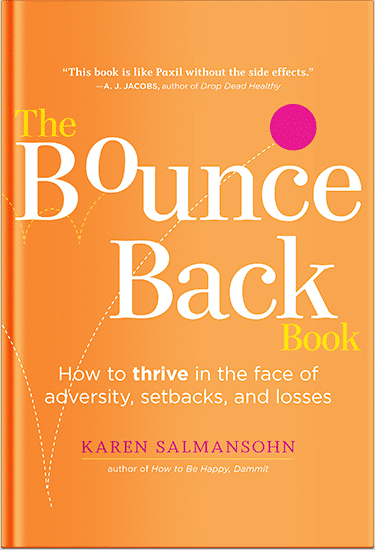 Staying active gets more important with age, not less. While youth often comes with a built-in drive to move, explore, and stay on the go, aging tends to invite more sitting, slower routines, and a gradual shift toward stillness. That may feel normal, but it doesn’t always serve your body well in the long run.
Staying active gets more important with age, not less. While youth often comes with a built-in drive to move, explore, and stay on the go, aging tends to invite more sitting, slower routines, and a gradual shift toward stillness. That may feel normal, but it doesn’t always serve your body well in the long run.
If you’re finding that movement takes a little more effort these days, you’re not alone. But even small amounts of physical activity can offer big payoffs for your strength, balance, flexibility, and mental health. And no, you don’t have to hit the gym or take up running. You have to keep moving in ways that feel right for your body. Whether you’re in your 60s, 70s, or beyond, movement is a key ingredient for maintaining independence and overall well-being.
Let’s break down why that is and how you can start moving more, no matter your current level of mobility.
Safe and Simple Ways to Stay Active as You Age
As you grow older, your body naturally goes through changes that affect muscle strength, joint flexibility, and balance. These shifts can make traditional workouts feel challenging or even risky. But that doesn’t mean you should give up on staying active. It just means you need to move smarter.
If you’re looking for accessible, low-impact ways to improve your flexibility and boost circulation, you might consider trying the best chair exercises for seniors. These routines are specifically designed to help older adults build strength, improve their range of motion, and feel more confident in their movements, all without the need to stand for long periods or use complicated gym equipment.
Chair exercises are great because you can do them from the comfort of your living room. You can follow along with simple movements that help you loosen up tight joints, build coordination, and keep your body functioning at its best. Plus, the consistency of a short daily routine can have a meaningful impact on how you feel throughout the day, both physically and emotionally.
The Physical Benefits of Staying Active
One of the best things you can do for your body as you age is to keep it moving. Regular physical activity supports your heart health, lowers blood pressure, and reduces the risk of conditions like diabetes and arthritis. Even better, it helps you maintain muscle mass and bone density, two areas that often decline over time but are crucial for mobility and balance.
You may also notice an improvement in flexibility and posture. When your muscles stay loose and engaged, it’s easier to get up from a chair, walk without assistance, or even reach up into a cupboard. These everyday movements may seem small, but they’re critical for staying independent.
And don’t overlook your immune system. Studies suggest that moderate, regular exercise can actually strengthen your body’s ability to fight off illness, which becomes even more important as you age. The takeaway? You don’t have to do intense workouts; just moving more can help your body stay resilient.
How Movement Supports Mental and Emotional Health
Physical activity doesn’t just benefit your body. It does wonders for your mood and mental clarity, too. When you move your body, you boost the production of endorphins, often referred to as “feel-good” hormones. These natural chemicals help reduce stress, ease symptoms of anxiety and depression, and leave you feeling more upbeat overall.
Movement can also sharpen your memory and cognitive function. As we age, it’s common to experience occasional forgetfulness or slower thinking. But staying active keeps blood flowing to the brain, which supports mental alertness and may even reduce the risk of dementia.
And let’s not forget the social aspect. Whether you’re joining a virtual exercise class or simply walking with a friend, regular activity helps you stay connected to others. That kind of engagement is a huge part of emotional wellness, especially in later years when isolation can sneak in.
Building a Routine That Works for You
One of the biggest barriers to staying active as you get older is feeling unsure of where to start. But the key is to keep it simple and do what works for your body. You don’t need fancy equipment or a detailed plan. You need consistency and a willingness to try.
Start small. A 10-minute walk around the block, a few gentle stretches in the morning, or a short chair workout after lunch are all great ways to ease into a movement routine. The goal isn’t perfection. It’s progress. You’re looking for ways to make movement a natural part of your day, not something that feels like a chore.
Set reminders if you need to. Write it down on your calendar or leave a note in your favourite chair. And most importantly, celebrate the small wins. Every movement counts.
Adapting to Physical Limitations Without Giving Up
If you’re dealing with chronic pain, past injuries, or limited mobility, staying active can feel like a challenge. But giving up on movement altogether often makes things worse. Your body was made to move, and even gentle motions can help reduce stiffness, improve circulation, and lessen discomfort.
That is where low-impact options like stretching, water aerobics, or chair exercises can make a big difference. They allow you to work within your comfort zone while still gaining the benefits of regular activity.
Talk with your doctor if you’re unsure about what’s safe for you. A physical therapist or senior fitness specialist can also help tailor a routine to your specific needs. You don’t have to push through pain to get stronger. You have to keep moving in ways that feel supportive and manageable.
Aging doesn’t have to mean slowing down completely.
In fact, the more you move, the better equipped you’ll be to handle the changes that come with age. Whether it’s walking your dog, dancing to your favourite song, or doing a few gentle stretches while watching TV, movement helps keep your body and mind thriving.
The most important thing is to make it part of your routine and find joy in the process. No matter your age or ability level, you deserve to feel strong, independent, and energized. And it all starts with one simple step, literally.
So, if you’ve been putting off movement because it feels too hard or too late, now is the perfect time to start. You don’t have to go it alone, and you don’t have to do it perfectly. Just start where you are, do what you can, and trust that every little bit adds up to something great.
P.S. Before you zip off to your next Internet pit stop, check out these 2 game changers below - that could dramatically upscale your life.
1. Check Out My Book On Enjoying A Well-Lived Life: It’s called "Your To Die For Life: How to Maximize Joy and Minimize Regret Before Your Time Runs Out." Think of it as your life’s manual to cranking up the volume on joy, meaning, and connection. Learn more here.
2. Life Review Therapy - What if you could get a clear picture of where you are versus where you want to be, and find out exactly why you’re not there yet? That’s what Life Review Therapy is all about.. If you’re serious about transforming your life, let’s talk. Learn more HERE.
Think happier. Think calmer.
Think about subscribing for free weekly tools here.
No SPAM, ever! Read the Privacy Policy for more information.
One last step!
Please go to your inbox and click the confirmation link we just emailed you so you can start to get your free weekly NotSalmon Happiness Tools! Plus, you’ll immediately receive a chunklette of Karen’s bestselling Bounce Back Book!


 Staying active gets more important with age, not less. While youth often comes with a built-in drive to move, explore, and stay on the go, aging tends to invite more sitting, slower routines, and a gradual shift toward stillness. That may feel normal, but it doesn’t always serve your body well in the long run.
Staying active gets more important with age, not less. While youth often comes with a built-in drive to move, explore, and stay on the go, aging tends to invite more sitting, slower routines, and a gradual shift toward stillness. That may feel normal, but it doesn’t always serve your body well in the long run.